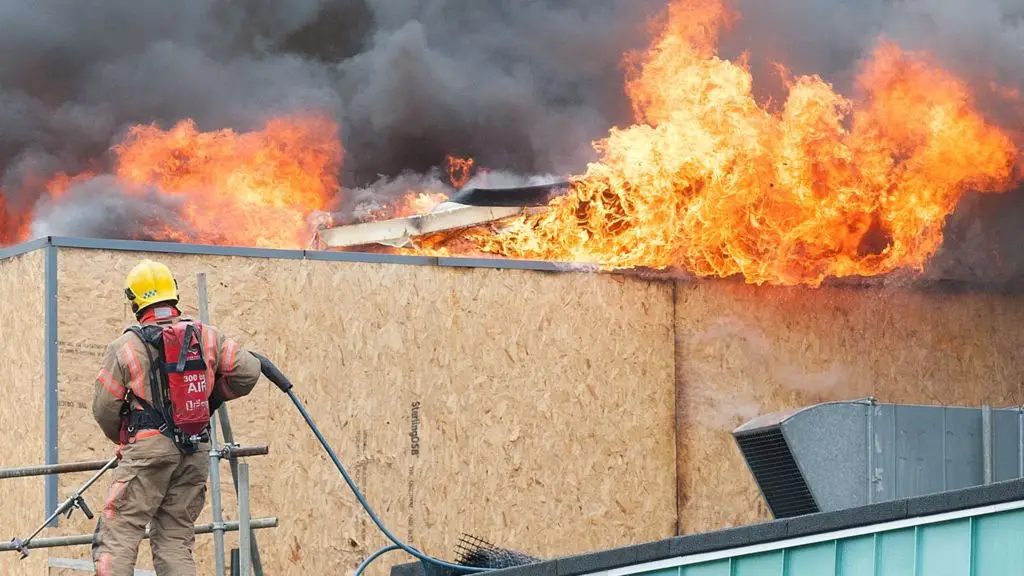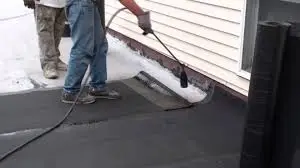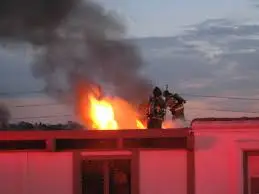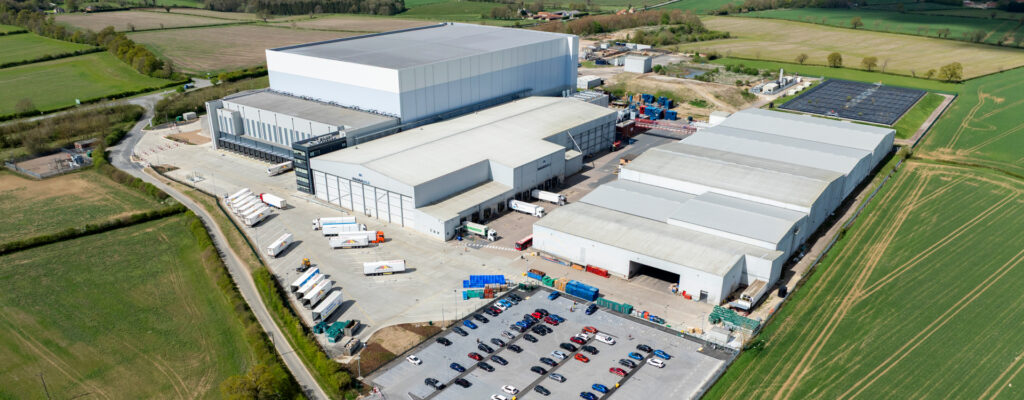There have been many concerns over the years about the application of torch-on systems and the use of naked flame systems in the bituminous roofing industry.
Between 2013-2014, on average there was 1 major fire a MONTH on commercial buildings reported. The majority had been through drying roofs with a gas torch and lack of skilled labour using them.
Many people mistakenly assume that it is not a concern in the single ply industry, however, many people overlook that a torch-on vapour control layer or preparation layer is being asked for.
There is also the fact that our maritime climate means we see plenty of rain or showers which in turn affect roof decks and substrates and quite often these need to be dried out, with gas torches being “the Weapon of Choice”.
On a concrete deck with open perimeters and no adjacent structures or obstacles then a gas torch in the right hands will do the job of drying the roof surface and safely applying a torch-on layer. But what about other types of structure or the various abutments that exist?

There is a misunderstanding in the application side of the industry on what constitutes a combustible surface, many not considering wood-based sheet materials as a risk. Like a weapon, the gas torch used in the wrong hands or without the necessary knowledge or training can cause devastation.
In the single ply Industry gas torches are used most frequently to dry roof or substrate surfaces and with the awareness of the Safe2Torch campaign there should be greater awareness of the inherent risks.
There are other means to assist in drying out damp or wet surfaces, which include sweeping and/or mopping surface water. Sawdust is also an effective means of absorbing moisture (Sawdust, once used should be collected and disposed and not left on the roof).
Once the surface moisture has been dealt with, leaf blowers can be used to circulate the air and assist in the drying process. There are also other hot air and flameless devices that can “force dry” wet or damp areas.

It is also vitally important that when using a gas torch that all components are checked frequently, that gas tubes are securely fastened to valves and connectors and all connections are checked for tightness and security. Gas torches that cut out when the trigger is released are preferable to those that remain “Open” constantly.
The National Federation of Roofing Contractors (NFRC) has issued new guidelines for safe practice when using gas torches in roofing. The Safe2Torch campaign has been developed in partnership with contractor and manufacturer members of the NFRC.
The campaign addresses the risk of fire when drying out roof surfaces or using gas torches to install torch-on membranes. Safe2Torch consists of a guidelines booklet and a checklist to be completed before work starts.
The main aim of Safe2Torch is to promote the safe use of hot works from specification to completion, providing a joined-up approach to every situation where there is any risk of fire.

IKO PLC has been closely involved in the consultations to design the new guidelines, working with the NFRC and other manufacturers in a two-year process to deliver a simple series of steps to follow when approaching a roofing project.
The guidelines directly affect at least 50% of all the flat roofs installed in the UK. It’s a serious issue for the industry, so having a clear guide to hot works at each stage from specification to completion is a great contribution to safety at work.
The aim of the NFRC is to have manufacturers and contractors pledge their support for the Safe2Torch campaign, to show they have read and understood the guidance and are committed to promoting and implementing the campaign throughout their organisation.
Although the guidelines are just that – a guide, not a statutory requirement – Safe2Torch is a welcome addition to safety in the roofing industry. There may be those in the industry who will not see the need for information or instructions on a process they have been using for years, but there is always room for clarification.
A reminder of the risks involved is never wasted, and it’s useful for both newcomers and old hands to have a quick, Safe2Torch checklist to follow.
IKO Polymeric’s bespoke specification service is well equipped to provide specifications with the Safe2Torch campaign in mind. The specification can provide VCL membranes and methods of application to design out and minimise risks associated with hot works.
Torch-on VCL’s can be cost and time effective but there will be areas on most roofs where they are not suitable.

Kevin Taylor, Head of Technical Services at the NFRC, comments on the importance of the Safe2Torch guidelines: “Roof fires, no matter how minor, pose a serious threat to life, property, the image of the industry and possibly even the long-term future of torch-on as an accepted method of covering a roof.”
“The NFRC seeks to significantly reduce the risk of roof fires when using gas torches by educating contractors and manufacturers with guidance on safe working practices.”
The campaign will promote the positive side of the industry, where safe specifications and safe working practices are second nature. It will give clients assurance that if they engage with a Safe2Torch Contractor and/or Manufacturer, their roof works will have been planned and installed within the requirements of the Safe2Torch guidance.
For further information on the Safe2Torch campaign follow this link: https://www.nfrc.co.uk/safe2torch
Acknowledgements: Parts of this blog were sourced from IKO PLC and the NFRC.
For more information or enquiries about torch-on or single ply roofing, please contact our Technical Team.


